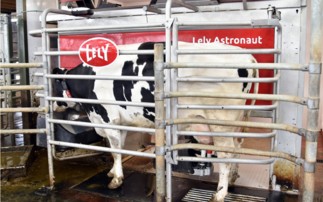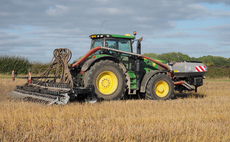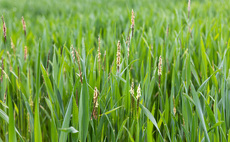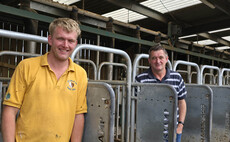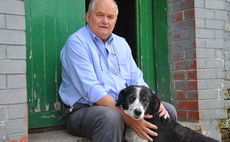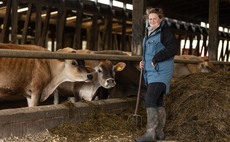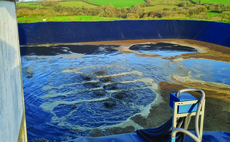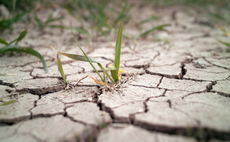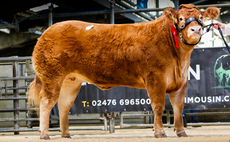
With forage making up such a high percentage of the cow's diet, it is crucial to know what you are working with, says Bruce Forshaw. He says: "Go through your planned winter ration sooner rather than later so you can evaluate your stocks. "If you think you may run out of anything, now is the time to plan for that.
In particular, if it looks like you have less than 180 days supply of silage, a moist feed might be a suitable alternative to extend what you have. "There might also be options to take an extra cut of silage or extend your autumn grazing, if the autumn is dry."
Building blocks
The ForFarmers' analyses of this year's first, second and a combination of third, fourth and fifth cuts show that across the board there is more energy and protein compared to 2022, he says. High crude protein levels may be, in part, a result of more fertiliser being applied this year than last.
He says: "With these high protein levels, it is worth thinking about the protein you are buying-in. "Can you reduce this while maintaining cow performance? Reducing the protein you buy in will reduce costs and contribute to your farm's sustainability targets." Looking at more depth there is some cause for concern from analysis of the second and later cuts.
"They have a lower Conservation Index and a higher Heating Index indicating they are at increased risk of aerobic spoilage and heating once the clamp is opened. "This is, in part, due to lower lactic and acetic acids and higher butyric acid. "For second cuts, we are also seeing an average Heating Index of 27.8, which means some will be a higher.
"There is a high risk of clamps heating up and anerobic spoilage, once they are open, meaning energy loss. Good clamp management is going to be crucial this winter. "We are also seeing higher ash percentages in some first cuts. "It is creeping up towards 10% in some, which can indicate soil contamination. This might well be as a result of the wet summer and silaging conditions we have had."
ForFarmers has also compared the results from silages made using additives with those made without. Those made with additives consistently show higher D value.
This means more digestible organic dry matter which will lead to more milk potential, says Bruce. "Silage additives might seem like an extra expense, but they help to reduce secondary fermentation, increase palatability and intakes."
Minerals
Keeping a close eye on the mineral content of silage is also essential in advance of winter, he says.
"One of the benefits of the extensive ForFarmers network of experts is the sharing of information and insight from farms across the country. "One colleague based in Shropshire recently shared an interesting observation he had made from customers' silage analyses. "He had noticed some high DCAB silages and wondered if this was the same in other areas. This prompted me to look at data from farms across the country with a harvest date of 2023 and yes, the average mineral analysis is showing similar results across the board.
"After further exploration, I could see that this was being caused by higher than normal potassium levels and lower chloride levels as these are the key parts of a cation-anion balance in a ration." While this may not make a huge difference to cows in the milking herd, it can pose a problem for dry cows - both organic and conventional - and can result in milk fever, he says.
"Clinical cases of milk fever might be the only visible signs of the wider issue of subclinical milk fever with dry cows. Do not lose future milk to issues with the dry cow diet." It is unclear why this year's silage is showing raised levels. "It could be due to a number of factors occurring this season, but what is important is that it has been identified so you can ration accordingly to ensure diets are appropriate. "When rationing dry cows with full or semi DCAB diets, it is particularly important that mineral analysis is carried out on all forages.
"Our advice is to do the job right when it comes to silage analysis - get full nutritional and mineral analysis of your silage and ration exactly what your cows need to help them perform at their best while minimising waste. "Mineral content of silage can catch you out if there is a change, so we recommend all farms take at least one sample at the beginning of the season, especially when rationing dry cows."
Supplements
With tight margins it can be tempting to drop supplements from cows' diets. Bruce says: "Do not underestimate the benefit they will bring this winter to help you achieve your herd goals. "Lintec provides a fast-acting source of omega-3 fatty acids which are vital to support high-performing dairy cows.
"On many dairy farms, omega-3 provision is not at optimal levels due to feeding grass silage at variable quantity and quality throughout the season or because of the type of feeding system a farm is operating. "Offering both milk production, health and fertility benefits, as well as environmental gains, the targeted feeding of Lintec provides a rare ‘win-win' nutritional solution within the dairy sector." Omega-3 fatty acids play a key role in helping improve successful pregnancies and successful heat detection, says Bruce.
"About 75% of developing embryos are lost within the first 21 days of pregnancy. This is often due to hormonal imbalance in the cow, with insufficient signals being transmitted from the embryo to make a cow aware she is pregnant, resulting in frequent embryo loss."
The high levels of omega-3 fatty acids found in Lintec have been shown to rebalance cow hormones, boost progesterone levels and suppress prostaglandin levels; all of which help a cow to maintain her pregnancy once in-calf. Due to the effect Lintec has on cow behaviour during their oestrus cycle, cows also display stronger signs of heat which last longer, making heat detection easier too. This in turn helps to improve the number of successful services and boosts pregnancy rates.
Healthy cows
Bruce says: "As all dairy producers know, a healthy cow is an easy-to-manage cow. Cows with fewer health complaints are also likely to be more productive, profitable and stay within the milking herd for a longer period. "So anything which can be done nutritionally to support cow health is a good idea.
"Overall cow health will benefit from Lintec thanks to the reduction of acid loading within the rumen."
Cows fed a diet with high levels of starch and sugars can suffer from impaired rumen performance due to a build-up of lactic acid and volatile fatty acids (VFAs), he says.
"This, in turn, can reduce rumen pH, making it more acidic and cows are therefore susceptible to acidosis." Lintec aids the removal of VFAs from the rumen and therefore works to increase rumen pH, stabilise the rumen environment and ensure optimal rumen performance - all of which will improve fibre digestion, feed efficiency, cow performance and health.
As well as supporting better cow fertility, Lintec has also been shown to have a positive impact on both milk yields and quality. "Lintec's high levels of omega-3 fatty acids help increase feed efficiency with the addition of energy in the form of fat. "This in turn reduces the amount of energy wasted in the rumen and the wasted energy which is ‘suppressed' would usually take the form of methane."
With improved efficiency in the rumen and udder, there is more energy available for milk production, he says. "It is therefore unsurprising that herds feeding Lintec at 0.5-1.5kg/day can experience an uplift in milk yield of up to three litres per cow per day."








